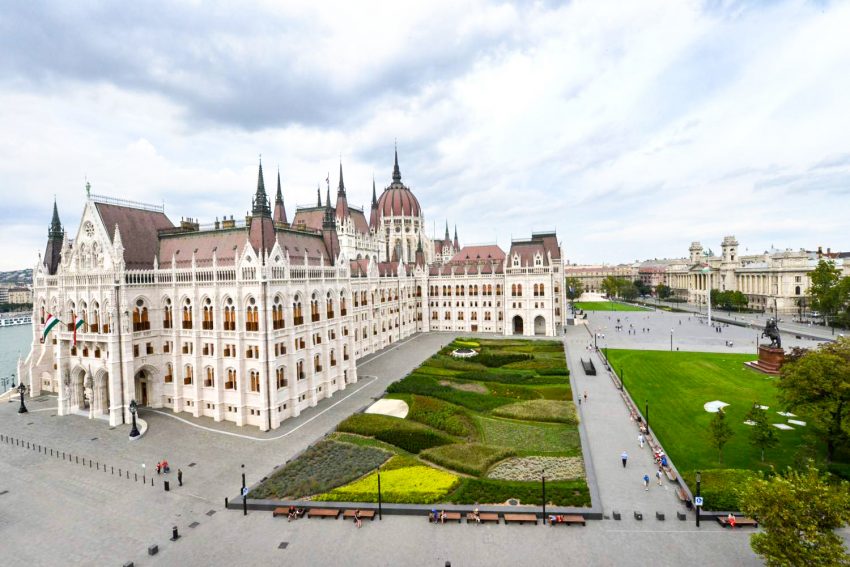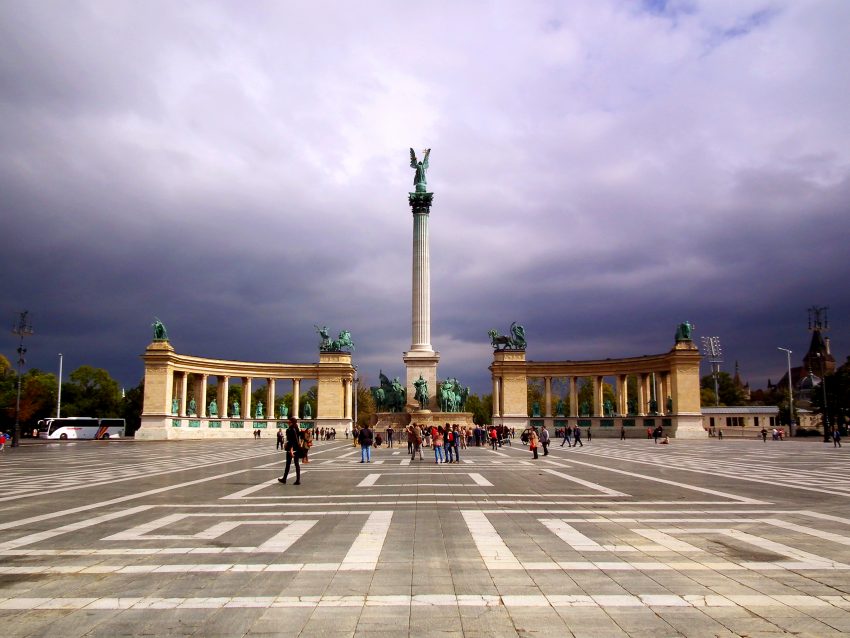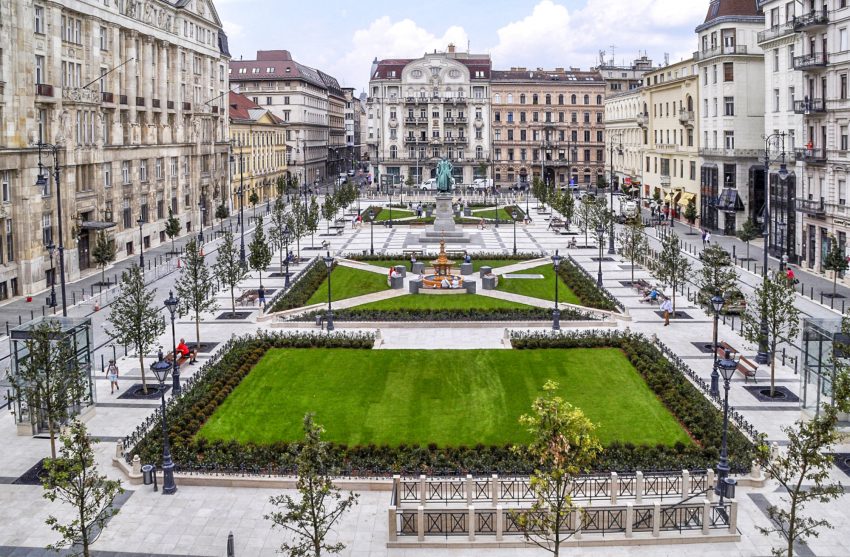Every city has a great square, where people come together and enjoy their surroundings as well as each other’s company, where they gape in awe at the sight of grand civic buildings, and where they can really get in touch with the true spirit or identity of the place. Budapest is in a fortunate position that it has not just one, but several great squares. Here are four of our favourites from downtown Pest.
Kossuth Lajos tér
Nicknamed as the main square of the Nation, Kossuth tér’s first depiction on a map dates from 1804: architect János Hild wanted to build a market on the south side of the planned, but despite his best efforts, the low-lying area became known as one of the city’s largest rubbish dumps. By the second half of the 19th century, it was known as Tömő tér (Landfill Square), and soon, as the country started to make its first steps on the road to modernization, the once desolate dumpsite became the symbolic centre of the Hungarian state. A number of great public buildings were erected here at the turn of the century, the most impressive of all being Imre Steindl’s neo-gothic style Hungarian Parliament Building.
The square received its current name in 1927 to commemorate the 125th anniversary of the birth of famous Hungarian statesman Lajos Kossuth. During the 1956 uprising against the Soviet-controlled Hungarian government, hundreds of protestors were massacred on the square: a memorial to the victims was created in the square’s southern ventilation tunnel. In 2012 it was decided that the square would be restored to its original, pre-1944 view. The refurbished public square, complete with statues, a sustainable park, and a spectacular pool of water, was reopened in 2014, but will only be completed once the last, westernmost section of Dezső Hültl’s neo-Renaissance building complex is finally finished.

Heroes’ Square
Hungary’s most renowned, and the city’s largest and most spacious square is found at the outbound end of Andrássy út, adjacent to City Park, and bookended by the Neoclassical-style buildings of the Museum of Fine Arts and the Kunsthalle, both designed by the duo of Albert Schickedanz and Fülöp Herczog. Its construction began as part of the millennium celebrations in 1896, but its central feature, the picturesque Millennium Memorial was only finished in 1906: it is composed of the statue of Archangel Gabriel standing on top of a column and holding up the Holy Crown of St. Stephen and the Patriarchal cross, the seven Hungarian chieftains mounted on their horses, four allegorical figures, and fourteen prominent figures of Hungarian history in the two colonnades (seven statues each).
The square also gives place to the so-called Memorial Stone of Heroes, a monument originally erected in 1929 to commemorate those who gave their lives for Hungary, and sometimes erroneously referred to as the Tomb of the Unknown Soldier. Fun fact: the memorial is built on top of a 971 meters deep well, which produces 831 litres of hot water per minute and is used to feed the pools of Széchenyi and Dagály Baths.

Szabadság tér
What is now one of Budapest’s most impressive square was occupied by the bulky New Building in the 19th century, a sprawling fortress that eventually became a prison for many of the Hungarian revolutionaries of 1848-49. The “Hungarian Bastille” was torn down in 1897, and was quickly replaced by a green, neatly organized, magnificent park, designed by Antal Palóczi – the grand buildings surrounding Szabadság tér (named thus in honour of the Hungarian Revolution) only came a few years later.
Today, the square gives home to the Art Nouveau-style building of the US Embassy, the imposing Stock Exchange, the headquarters of the Hungarian National Bank, the statue of Harry H. Bandholtz, who prevented Romanian soldiers from looting the Hungarian National Museum in the chaos after World War I with only a riding crop in hand, as well as two oft-disputed monuments, one to the Soviet forces who liberated Hungary at the end of WWII, and another to the victims of German occupation. Political tensions aside, its plane trees, beautiful buildings, and large grassy areas make Szabadság tér one of the inner city’s most popular squares.

József Nádor tér
A few hundred meters south of Szabadság tér, near the Széchenyi Chain Bridge, you can find one of the oldest, yet also the youngest squares of Budapest. József Nádor tér bears the name of Archduke Joseph, Palatine of Hungary, a great advocate of city planning, public works and constructions, and one of the main figures who helped Budapest become a real metropolis by the beginning of the 20th century. Historically, the area of present-day József Nádor tér fell beyond the city walls of medieval Pest, and was used as a cemetery during the Turkish occupation. The first plan for the square was conceived by János Hild in 1805, but it only received its present rectangular shape in 1823.
For the first few decades, the square was characterized by a lack of vegetation: although an avid gardener in his private life and the founder of City Park, Archduke Joseph wasn’t too fond of planting trees in narrow urban spaces. Ironically, fifty years after his death, the square resembled a forest more than anything. Today, the recently refurbished József Nádor tér is a spick-and-span compromise between the Palatine’s original version and the urban jungle of later city planners. Equipped with two extravagant water fountains and enveloped by a double ring of trees and noteworthy buildings, it is a little Vienna in the heart of Budapest.
